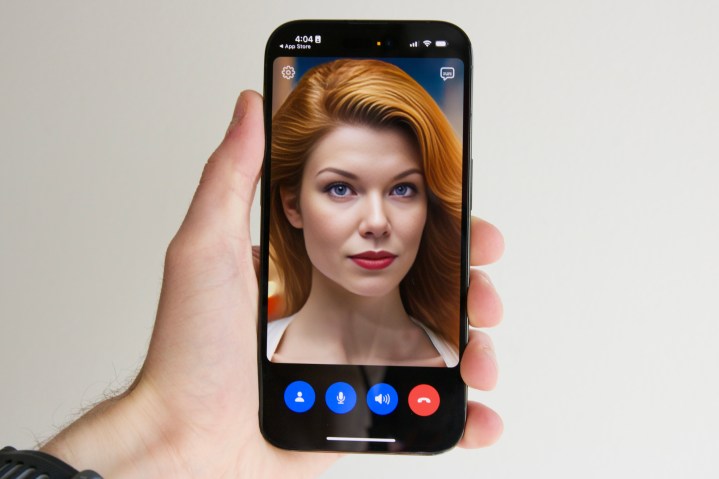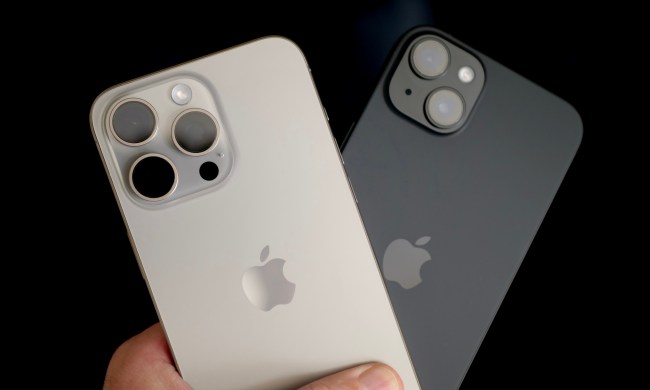Showing up to a videoconference as your digital avatar can be quite fun. Apple lets you do just that with Memojis during FaceTime. If you want something more ambitious on a different platform, Avatarify will turn into Albert Einstien or Mona Lisa for Zoom calls. But what if you could bring an AI conversation to life? Say, by talking to ChatGPT as if OpenAI’s AI was a CGI person talking to you on a video call?
Well, that’s now possible. Call Annie is an app that turns ChatGPT into Annie, a talking female avatar that doesn’t look like a glitchy visual mess. Developed by Animato.Ai, the app is currently exclusive to iOS 16, but you can also use it on macOS 13 machines with an M-series processor inside.
A ChatGPT-powered video call in action
Another limitation is that you need at least the iPhone 12 or a later model to start a video call with Annie because the real-time conversion of linguistic prompts into visual cues draws power from Apple’s Neural Engine.
The app’s makers claim that talking to Annie “face-to-face in real time time feels more natural and faster than typing and reading text.” So far, the sample videos we have seen on social media, like the one above, show a fairly convincing video call interface.
Right now, Annie appears to be pretty good at holding a fluent conversation, even though the voice sounds robotic, and the phrase pausing could also use some work. The answers, however, are typical of the answers you would get while texting back-and-forth with ChatGPT. And given enough time and improved voice training, Call Annie interactions can become a lot more natural-sounding.
It all brings back memories of the sci-fi flick Her, in which Joaquin Phoenix’s character falls in love with one such AI. One user asked on Reddit whether Annie can have a “memory” system that will turn it into a smarter “friend,” to which the app developers replied with “soon.”
This is only the beginning for Annie
Users who have tried the app note that it occasionally flubs the pronunciation of words, but once corrected, it also learns right away. One user described this experience as “scary stuff.”Another issue it has is with pronouncing words in languages other than English, something that the developers are trying to fix.
Thanks to its ChatGPT smarts, the app’s developers say it can help you with everything from learning and web searches to serving as a tour guide or even a virtual companion. We don’t know if it’s as smart as other virtual partner apps like Replika, but considering the fact that Annie is based on ChatGPT (and its vast data training model), you can have a significantly deeper and fact-driven conversation with Annie.
Animato’s App Store description notes that the AI keeps all conversations “confidential” but hasn’t specified what kind of security measures have been put in place and whether it uses the user conversations for training and refining Annie’s systems.

However, in the same Reddit conversation, the app’s creators mention that no voice record is saved and that only the “transcription is saved/forwarded to ChatGPT to get all the dialogue.” The developer also stresses that they don’t sell any data to third parties and that users can delete the web search history in the app at their own convenience.
When asked why a web version of the app doesn’t exist, the team argues that a web browser can’t efficiently leverage the power of a dedicated on-device neural engine or any other machine learning hardware the way an installed app can. In a nutshell, it’s a performance limitation that can only be handled natively via an app … for now.
Annie appears to be the next-gen version of an older project called Samantha, which lets you make an audio call with one such AI named Samatha. Some Call Annie users report that the ChatGPT-fueled avatar insists that its name is Samantha and not Annie. The developers say it will be fixed soon.
Once you install the app, it lets you save the AI’s number from the app’s Settings section. For folks interested in testing the more advanced capabilities, the TestFlight program for Call Annie can be accessed from Animato’s official Discord channel.



